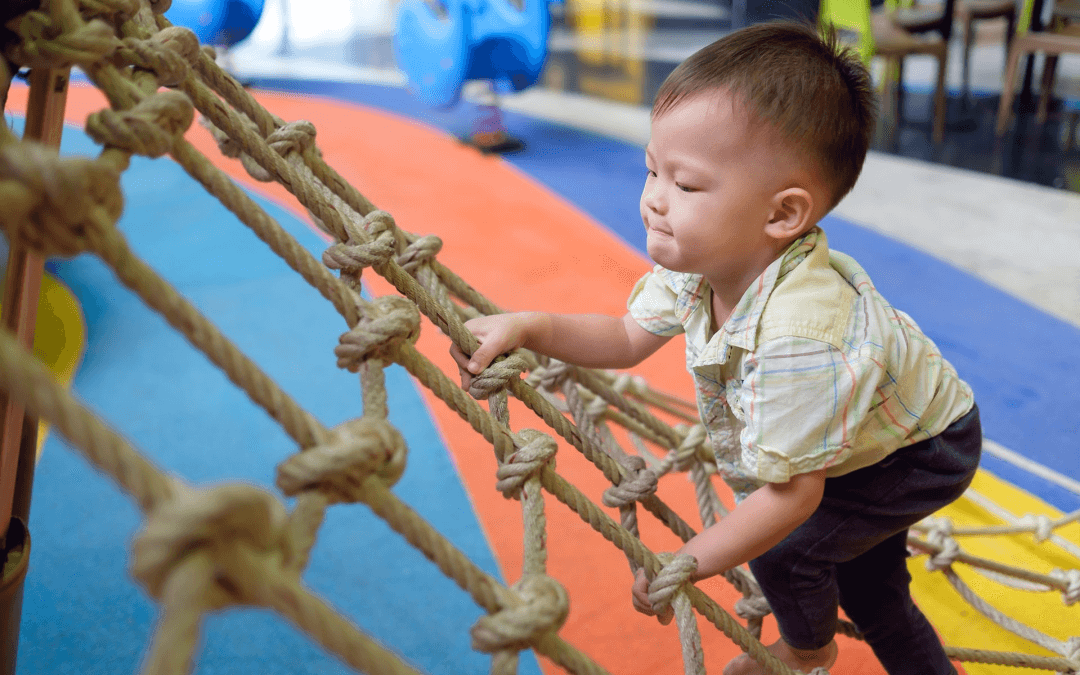Early years educators understand the importance of children’s play for their learning and development. The role of adults is to provide a safe environment, which allows them to constantly challenge themselves, solve problems and be brave. Children need risky play!
In recent years, society has become increasingly risk-averse with the media prompting concerns over child protection and health and safety scares. Children play outdoors less and public playgrounds are often devoid of challenge and excitement. condition, many children have few opportunities to experience risk or expel excess energy. Adults tend to remove all possible risks, for fear of litigation.
Of course, it is essential to do a risk assessment that covers potential hazards and assesses the level of risk for the ages and stages of the children attending any early years setting. This ensures that the supervision and support provided keep children safe but does not act as a straitjacket.
Instead of worrying “what could go wrong?”, or where the next accident might happen, educators should take a risk-benefit approach to supporting children on the next step of their journey towards self-reliance, confidence and autonomy.
What is ‘risk benefit’ play?
Risky play involves kids experimenting and pushing themselves to figure out what will happen, without knowing the exact outcome. If kids don’t go far enough with their play, it’s boring and if they go too far, it gets too scary.
When we have kids engage in play, it’s really a fundamental way for them to figure out the world — how the world works, how their body works. These little experiments are all done in context of a relatively safe space.
Risky play in early childhood can help develop a child’s self-confidence, resilience, executive functioning abilities and even risk-management skills. Work in injury prevention research shows that engaging in risky play can actually reduce the risk of injury, too.
Self-awareness, resilience and safety
It is important for young children to be able to develop self-awareness about their personal abilities and limitations, and about how far they are able to stretch themselves in taking on new challenges. Children will develop a fine-tuned sense of danger, which is linked to their confidence and sense of adventure. It is vital they develop resilience and the ability to assess risk and keep themselves safe. The best way to do this is to allow them to learn through experimentation as they play.
Top tips for risky play
- Risk assess play activities, equipment and the environment as normal – remembering that not all risk assessments need to be written but you may find it helpful to keep a written record.
- Remove or reduce risks that pose a higher chance of causing harm.
- Consider the ‘benefits’ of a risky activity, for example, a tree with low branches could be considered risky as children could climb too high and fall. The risk benefit would be that children will:
- develop strength and balance,
- gain a sense of achievement,
- build confidence,
- test their capabilities,
- problem solving
- learn to anticipate danger
- become self aware
Practice the 17-second rule
Instead of telling your child not to climb so high or run so fast while observing them at play, take a moment — or, as Brussoni advises, 17 seconds. Step back, she says, and “see how your child is reacting to the situation so that you can actually get a better sense of what they’re capable of when you’re not getting in the way.”
This will provide them with “the opportunity to figure out for themselves what’s comfortable and what they can do,” while allowing them to develop those all-important risk-management skills.
With adequate supervision, the risk of a child falling is low and the risk benefit high.
- Supervise the activity and demonstrate or explain the correct technique
- Be prepared to risk assess ‘dynamically’, in other words respond to situations as they arise, remember that not all risks can be planned for in advance.
Remember that there is an element of risk in every new experience a child encounters, even approaching another child as a potential ‘new friend’ has the potential to go wrong. It takes practice and the development of self-regulation to cope with failure. Children need to be confident enough to take that risk in the first place.

